In this post, I’m going to show you the real-time ugliest fish that you never want to see again.
Among hundreds of ugly fish, we selected twenty-five that are ugliest fish among them.
You’ll enjoy reading as this article is full of images and covers:
- Scientific and common Name of each fish
- Their weight
- Maximum Length
- Edible status
- And many more interesting facts.
Let’s dive deep in…
Asian Sheepshead Wrasse
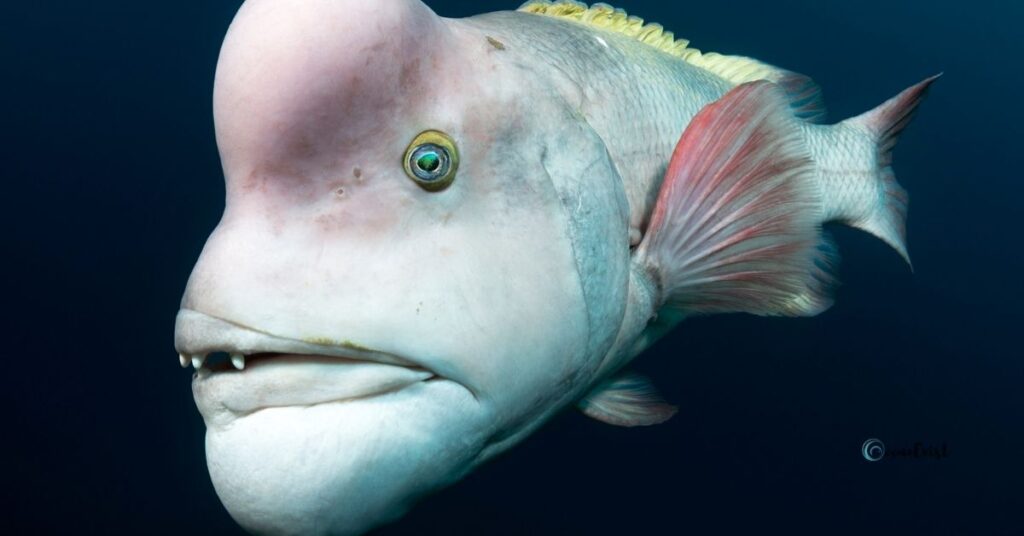
- Scientific Name = Semicossyphus reticulatus
- Maximum Weight = 14.7 kg
- Maximum Length = 100 cm
- Edible
Sheepshead is also known as Kabudai fish, as it is found in the waters of Japan, China, and Korean Peninsula, and the Ogasawara islands.
Bulging Blue, pinkish forehead makes it prominent in his wrasse family. An impressive set of large fang-like teeth in both the upper and lower jaw helps to capture different crustaceans, mollusks, sea urchins, etc. The massive lumpy head makes it one of the ugliest fish in the world.
The strange fact about the Asian sheepshead wrasse is that the aged females change their gender into a male. That’s why these are included in sequential hermaphrodites. They have external fertilization.
Although it is a delicate fish, it can live up to 20 years. It maintains biodiversity by preying on many small species. But unfortunately, the population of wrasse families is decreasing.
Vampire Fish
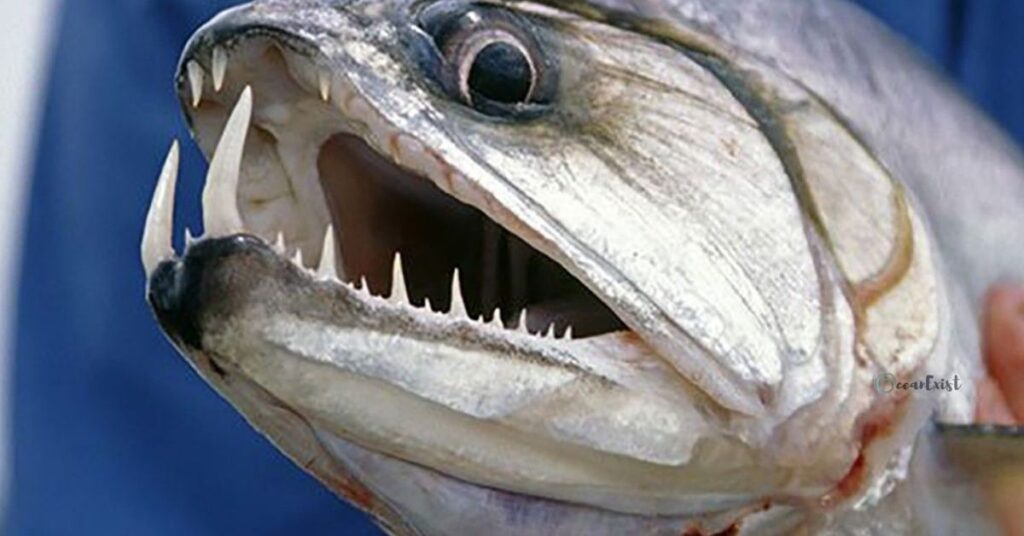
- Scientific Name = Vandellia cirrhosa
- Other Name = Pyaras
- Maximum Weight = 15 kg
- Maximum Length = 60 cm
- Edible
Strong, sharp horned teeth surrounding the razer-shaped tongue make it horrifying. Actually, its method of preying makes it frightening. They are not social and kill or threaten every other fish that is in the same aquarium.
These are not only frightening but also considered dangerous species. The strange thing about the vampire fish is that they can eat 50 % of their own weight.
They mostly eat smaller specimens that include shrimp, trout, tetras, minnows, etc. They rip their prey apart with their teeth and swallow them.
Pyara fish can live up to 6 to 12 months. They are mostly found in the Amazon basin in South America.
Gulper Eel

- Scientific Name = Eurypharynx pelecanoides
- Common Name = pelican eels
- Maximum Weight = 20 kg
- Maximum Length = 0.75 m
- Non-edible
The Gulper eel’s whole mouth is covered with a series of backward-moving teeth.
Its tiny pectoral fins, small eyes, long tail of several knots, and gigantic mouth make it very ugly.
Gulper eel has a photophore(light-producing organ), which is used for predation. This part shines, with a process called bioluminescence, into pink and red colors.
Gulper eels produce light flashes to attract prey like crustaceans, squids, and fish. When they come near, it lunges and gulps them into the gigantic mouth.
Gulper eels can live up to 85 years, just like humans.
Red Handfish
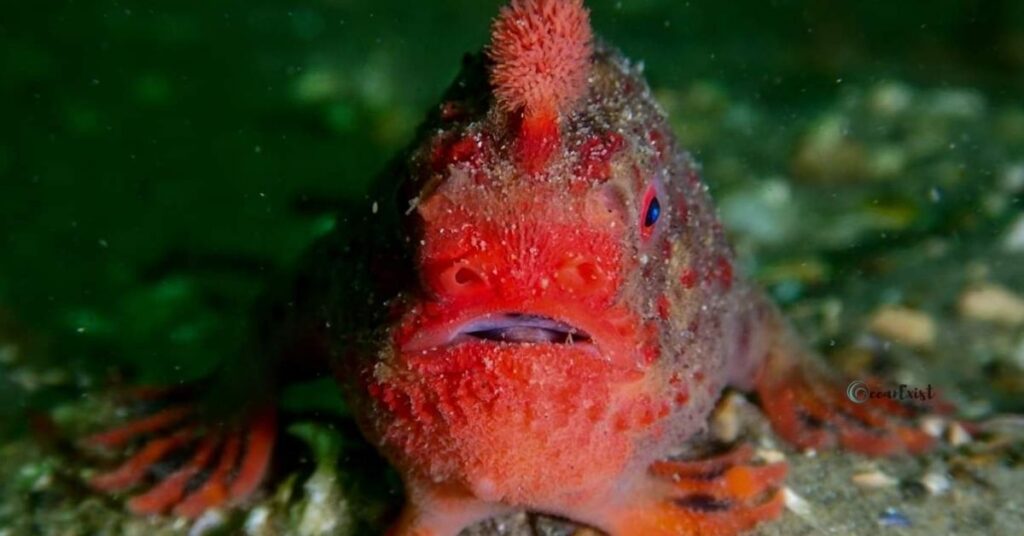
- Scientific Name = thymichthys politus
- Maximum Weight = 200 g
- Maximum Length = 80.1 mm
- Non-edible
They are called the red handfish because of their red morphs. They use red morphs for crawling. Red handfish have flat wart-like protuberances and red-colored bodies and fins.
Red handfish species are estimated to have only 100 fish. These are present only in a 50m patch of the reef of Tasmania. They mostly live in reefs and eat the crustaceans and small worms in the reefs.
Red handfish have a lifespan of about 5 to 7 years.
Cookiecutter Shark
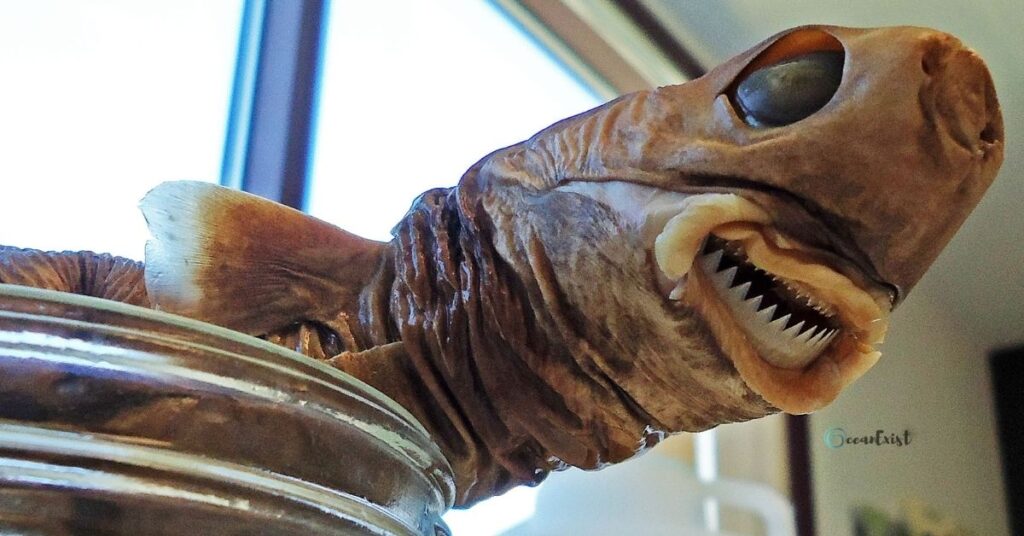
- Scientific name = Isistius brasiliensis
- Maximum weight = 4.5 kg
- Maximum length = 0.56m to 1m
- Non-edible
These are also called cigar fish due to their long, cylindrical shape. Their small head, large eyes, and blunt nose make them not only ugly but scary. The mouth has suctorial lips, 30-37 rows of teeth in the upper jaw, and 25-31 rows of teeth in the lower jaw. The cookiecutter shark is dark-colored but has photophores on the underside.
This luminescent shark can eat every ocean animal. Megamouth sharks, beaked whales, sperm whales, leopard seals, cetaceans squids, etc, are prey of cookiecutter sharks.
These sharks can live about 20 to 30 years. It is present in all the parts of tropical and warm ocean basins like the Atlantic, Brazil, and South Africa.
Wobbegong
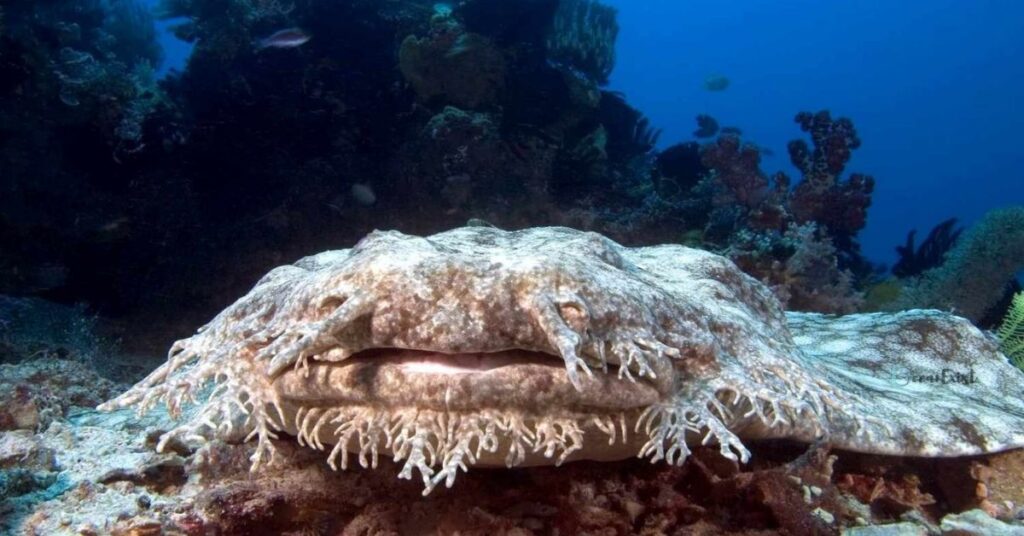
- Scientific name = Orectolobus maculatus
- Maximum weight = 14 to 18 kg
- Maximum length = 150 to 180 cm
- Edible
They are also called carpet sharks or tassel sharks due to their lumpy carpet-like shape, i.e., flattened body and broad head. Also, have oral and nasal grooves to smell and detect other animals.
Due to the camouflage on the body, they hide them in the reefs and hunt the prey. They wait lying partially buried in the soil. When prey, like any small fish, comes, they just snap their jaws.
Wobbegong can live about 20 to 30 years. And are found in Queensland, Australia.
Barreleye Fish
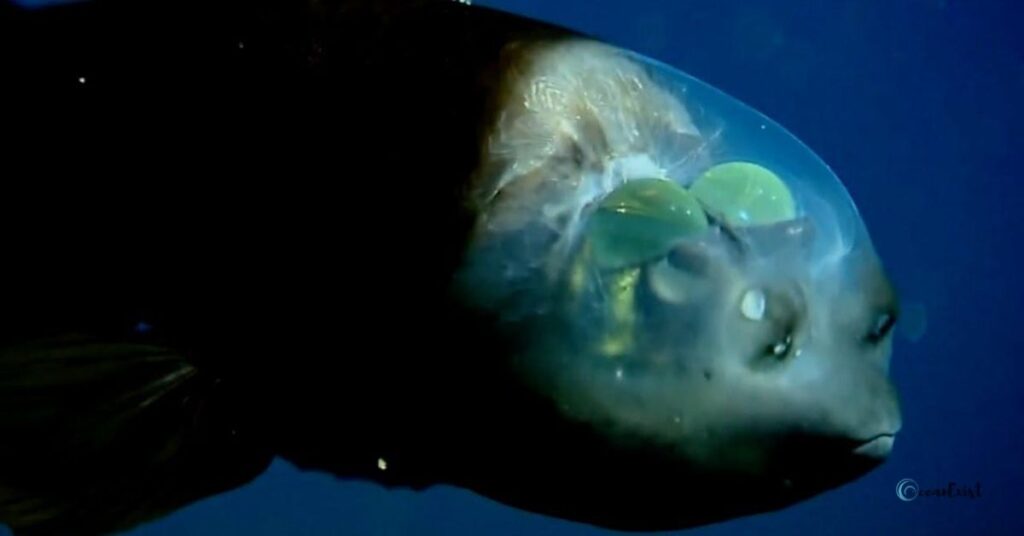
- Scientific Name = Opisthoproctus status
- Maximum weight = 0.1417
- Maximum length = 15 cm
- Non-edible
Their transparent head and two large green eyes inside the head make them peculiar. Their features help them to feed in the dark like bioluminescent substance release.
Barreleye fish are solitary species, i.e., they release their eggs and sperm in the water.
Barreleye fish can live for 60 years.
Bony-eared Assist
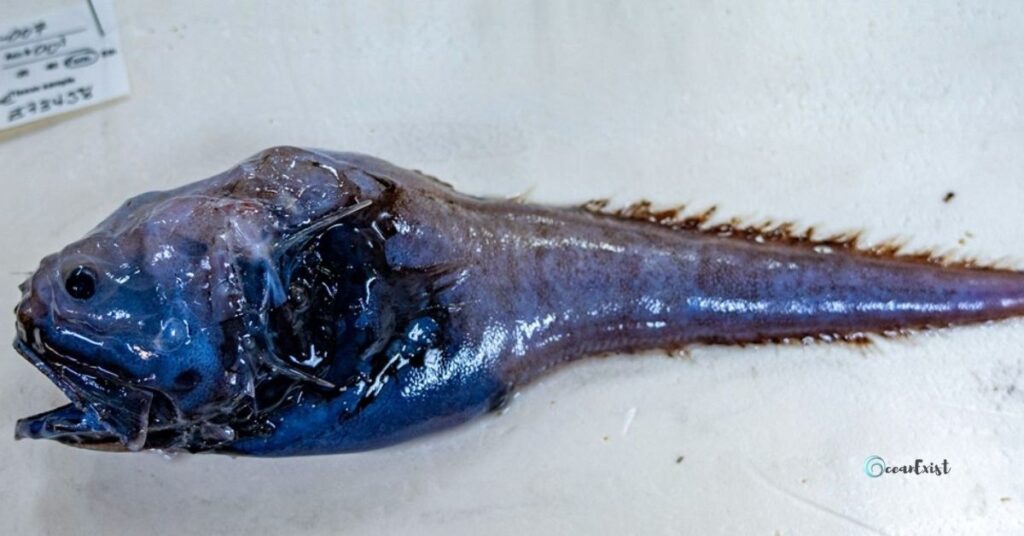
- Scientific name = Acanthonus armatus
- Other Name = Cusk eel
- Maximum weight = 40 grams
- Maximum length = 37.5 cm
- Non-edible
Bony-eared fish are not only ugly but also have the smallest brain of about 30 mg. Brownish or blackish cusk eels have large heads, small eyes, and forward-projecting divided spines.
They are found on the coasts of British Columbia and live at 4500 meters of depth. Bony-eared fish eat bacteria roaming around.
Bumphead Parrotfish
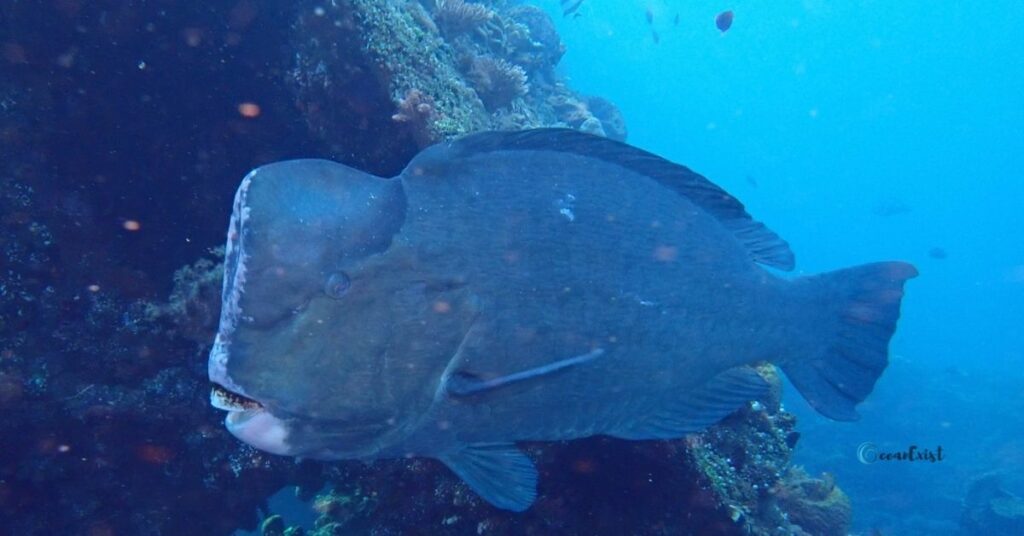
- Scientific name = Bolbometopon muricatum
- Other Name = Buffalo or giant head parrotfish
- Maximum weight = 46 kg
- Maximum length = 1.3 m
- Edible
These fish are monochromatic. Mature parrotfish have bulbous foreheads and teeth plates. These have scales over the whole body with scales except the head.
These are slow-growing but have a long life of about 40 years.
Toadfish
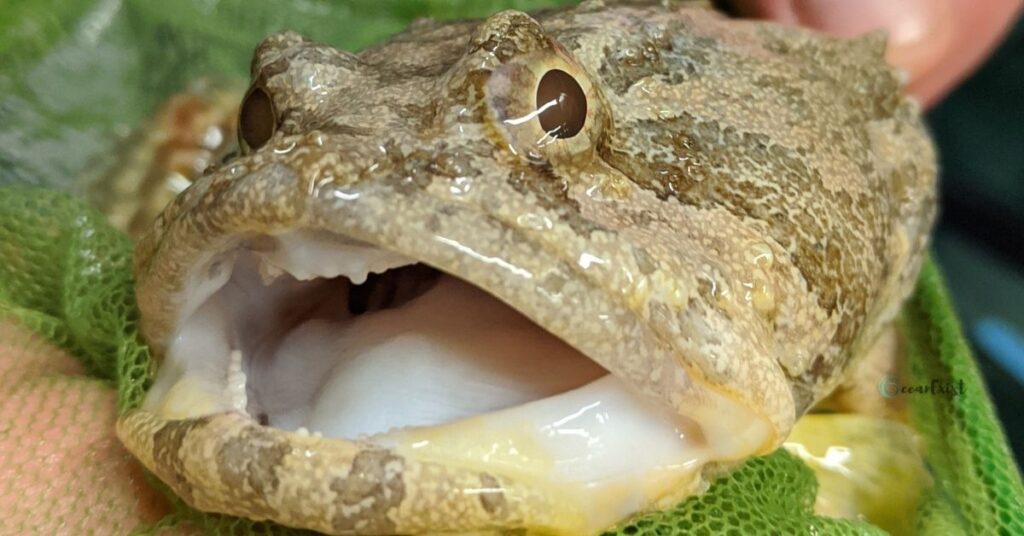
- Scientific name = Tetractenos hamiltoni
- Other Name = Dogfish
- Maximum weight = 1.36 kg
- Maximum length = 46.5 cm
- Edible
The interesting thing about the toadfish is that they can produce sound with their swim bladders.
Sandy to whitish-colored toadfish has brown spots on the back and upper sides. Fused teeth form a beak-like structure in the median groove.
Toadfish hide them in the sand, and only their eyes are exposed for preying. Some species are found in Queensland, Australia.
White Margin Stargazers
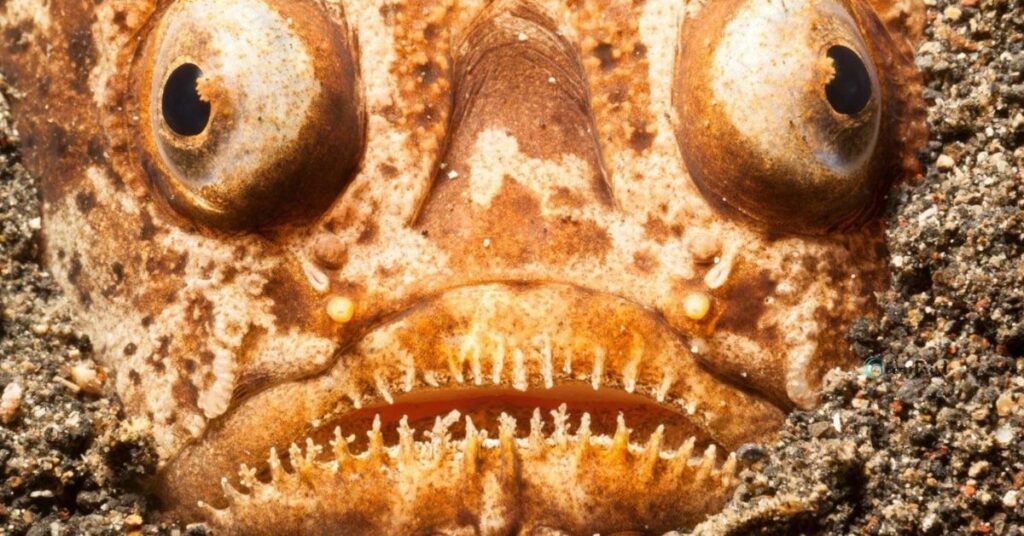
- Scientific Name = Uranoscopus sulphureus
- Other Name = Marbled Stargazer
- Maximum weight = 9 kg
- Maximum length = 45 cm
- Non -Edible
White margin stargazers have eyes on the top of their head. These fish only reveal their eyes and hide their body in the sand, waiting for the prey.
Double-grooved poison spines and electric organs make them very dangerous species. Star gazers can shock suspecting animals with about 50 volts.
Having both the venom and electric current, these are called the meanest creation.
Goblin Shark

- Scientific Name = Mitsukurina owstoni
- Other Name = Elfin shark
- Maximum weight = 210 kg
- Maximum length = 3 to 4 metres
- Non-Edible
This scary and ugly fish has a blade-like long snout. Under this snout, there are extended jaws with 35-53 rows of upper teeth and 31-62 rows of lower jaws.
Goblin sharks are an endangered species. These sharks sense their hunt like teleost fish through an electric field.
Ambon Scorpionfish
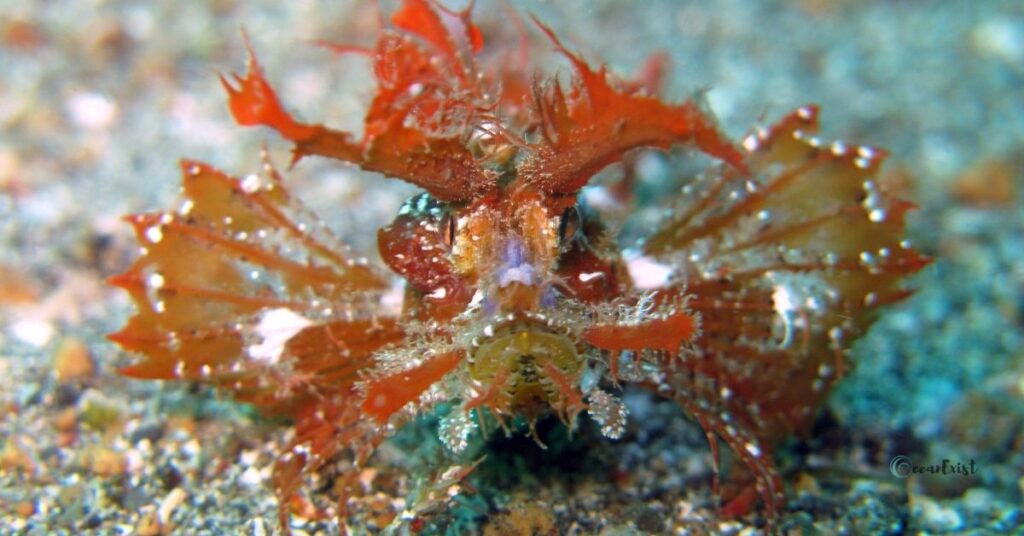
- Scientific name = Pteroidichthys amboinensis
- Other name = Godfrey’s scorpionfish
- Maximum weight = 1.55 kg
- Maximum length = 12 cm
- Non-Edible
Elongated but compressed scorpionfish have a shaggy body and can change color. Ambon fish have venom-bearing spines and rays.
These are found in the Red Sea, the Indian Ocean, Japan, and Australia. These are solitary ambush predators and hide themselves for hunting.
Giant Grenadier
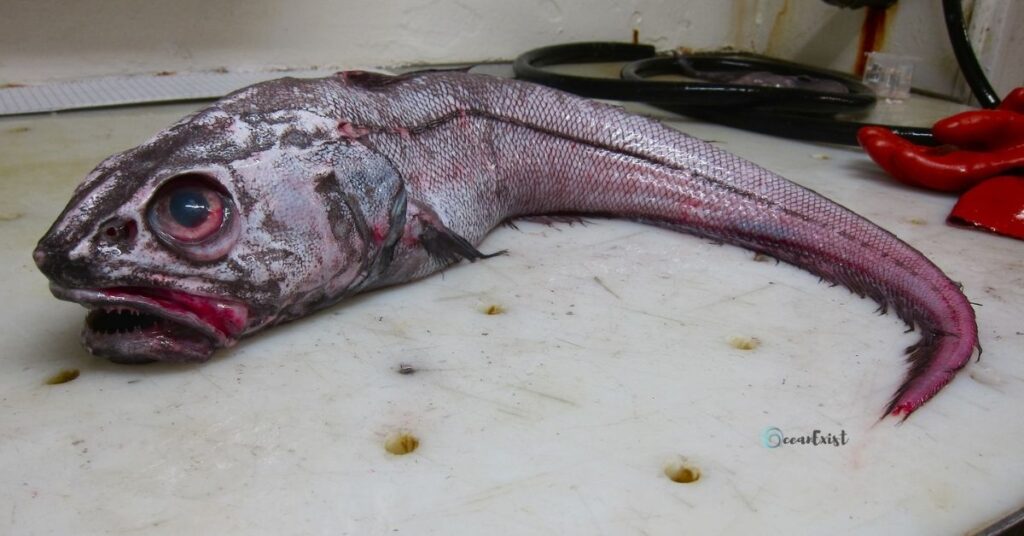
- Scientific name = Albatross pectoralis
- Other Name = Rattails
- Maximum weight = 86 kg
- Maximum length = 10 cm
- Edible
Grenadiers are characterized by a large head, large mouth, and large eyes. These are called rattails because of their rat-like tail.
These fish have sound-producing lungs and light-producing photophores for both hunting and courtship.
Giant grenadiers are found in the Central Pacific and North Pacific oceans. They live up to 56 years.
Hairy Frogfish
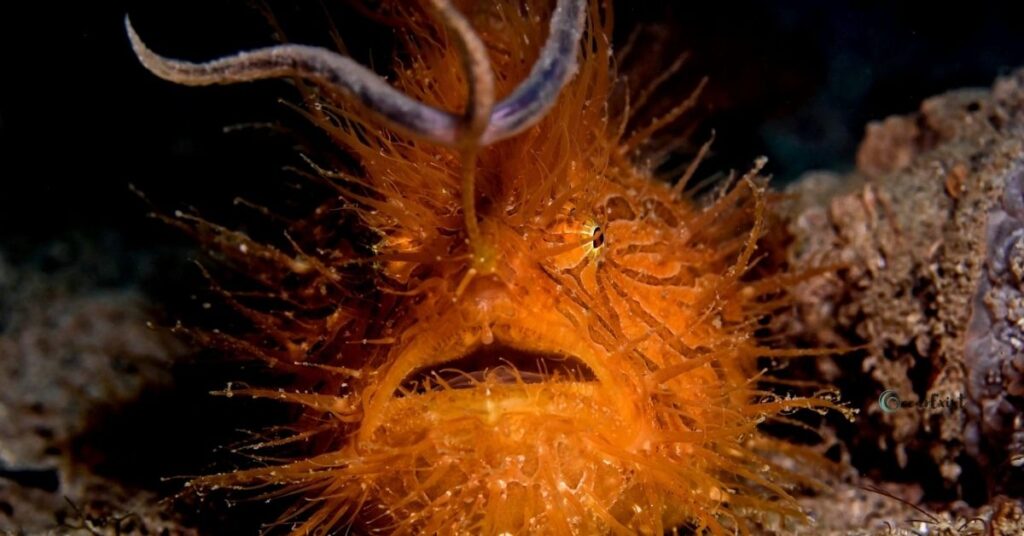
- Scientific Name = Antennarius striatus
- Other Name = Striated frogfish
- Maximum weight = 31 grams
- Maximum length = 22 cm
- Non-Edible
Frogfish having the capacity to change their colors can have yellow, brown, green, grey, and almost white colors. The whole body of the frogfish is covered with hair-like spines, which makes it the ugly species of anglerfish.
Hairy frogfish camouflage them and can swallow the prey equal to its own size. They use their pelvic fins for hopping.
Stonefish
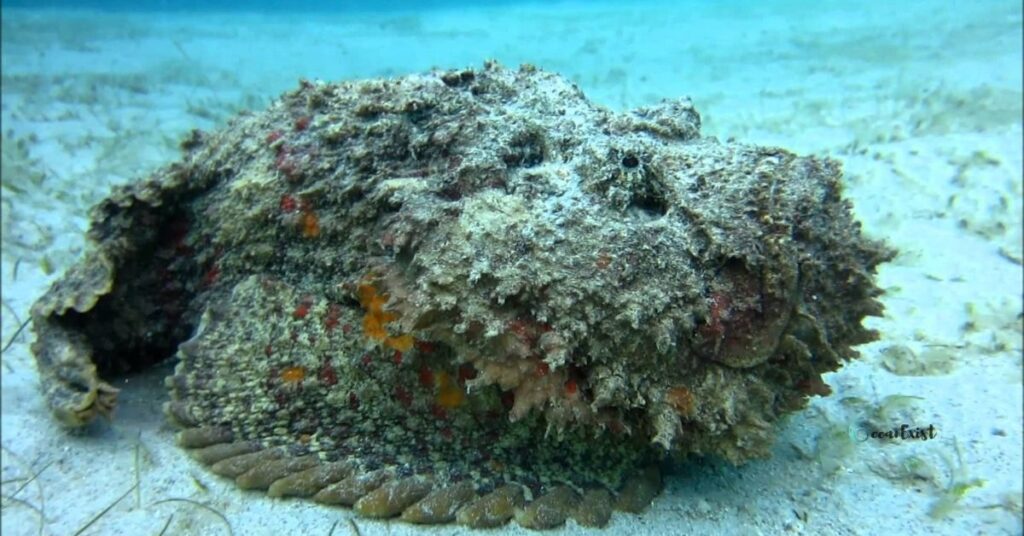
- Scientific name = Synanceia verrucosa
- Other Name = Reef fish
- Maximum weight = 2kg
- Maximum length = 40 cm
- Non-Edible
It has a wide and flattened head. Stonesh brown or grey-colored skin is covered with warts.
Stonefish, due to their shape, are called masters of camouflage. They bury them in reefs or corals for hunting or for their protection. Their verrucotoxin can kill the living organisms.
Stonefish are mostly found in the Indian Ocean, the Pacific Ocean, and the Red Sea.
Red-lipped Batfish
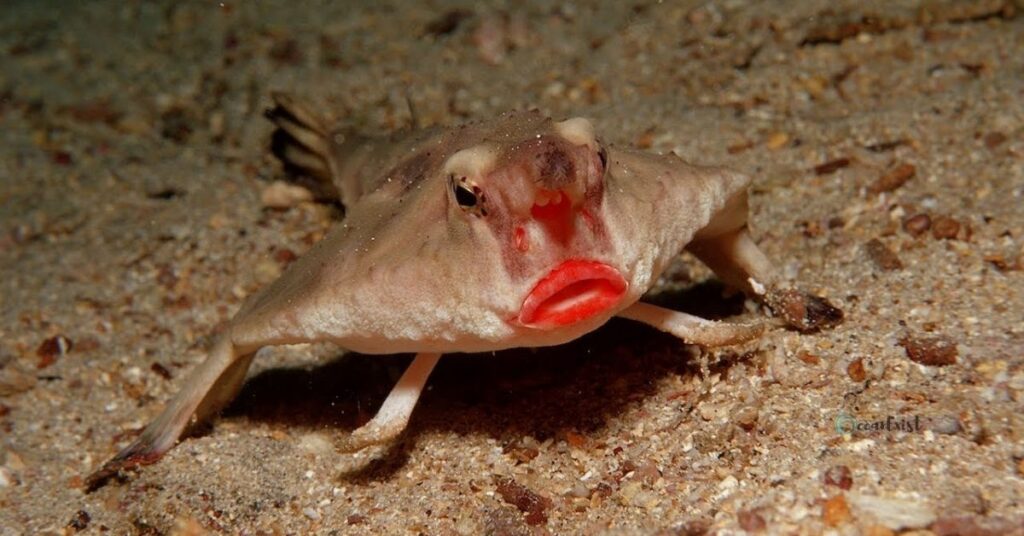
- Scientific Name = Ogcocephalus Darwini
- Other Name = Galapagos batfish
- Maximum weight = 1kg
- Maximum length = 40 cm
- Non-Edible
Batfish have brownish and greyish bodies with a dark brown stripe at the back. The fluorescent, bright red-colored lips make it strange and surprising.
Red-lipped batfish are not good swimmers. They are found on the ocean floors. Red-lipped batfish use illicium(nose on the head) to attract prey.
Sloane’s Viperfish
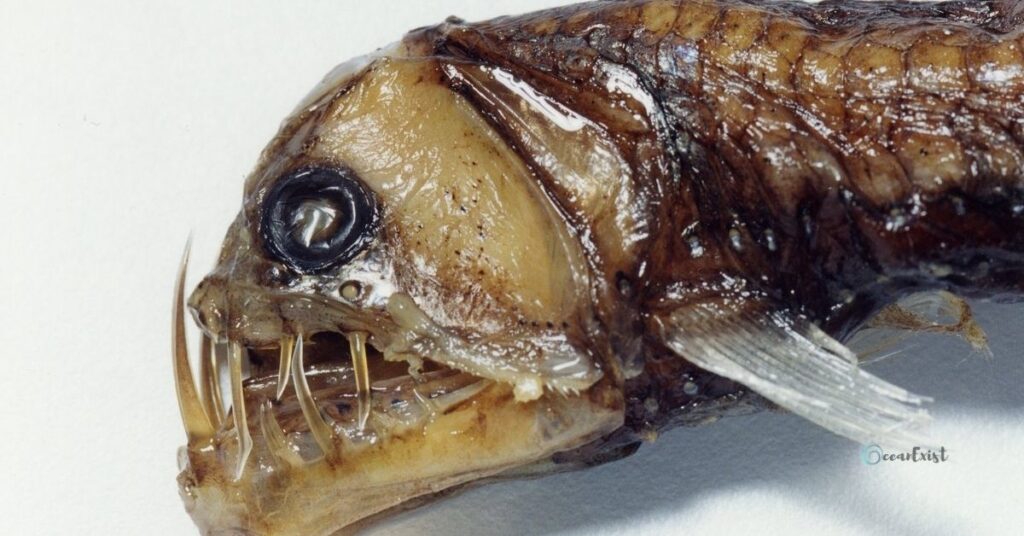
- Scientific Name = Chauliodus Sloan
- Other Name = Dragonfish
- Maximum weight = 5.66 grams
- Maximum length = 6 to 26 cm
- Edible
Sloane’s viperfish has an immobile cage of enormous teeth. This fish can be of green, silver, and black colors. A thick, gelatinous casing covers the body. It displays bioluminescence through the photophores to attract other bony fish and lanternfishes to eat them.
Atlantic Wolf Fish
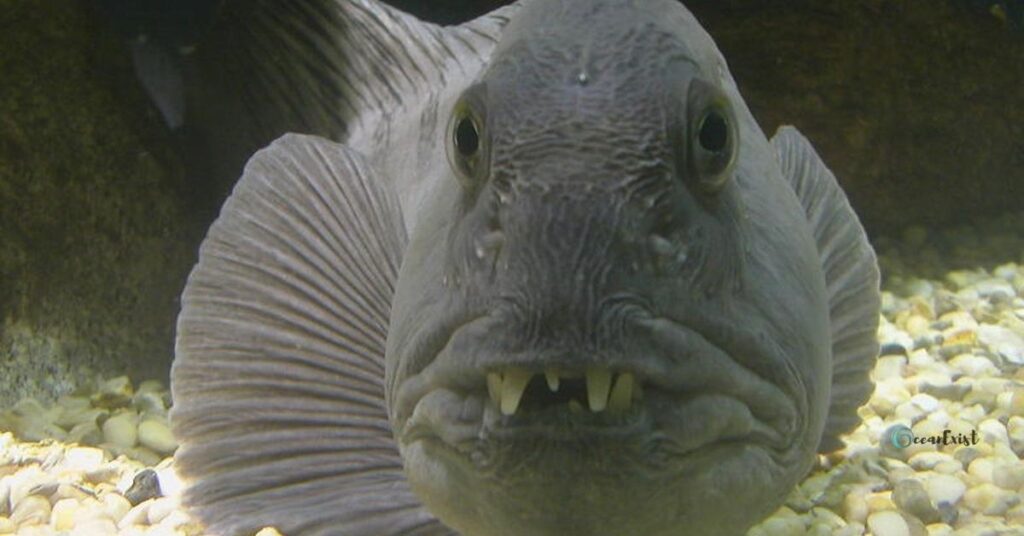
- Scientific Name = Anarhichas lupus
- Other Name = Devil fish wolf eel
- Maximum weight = 18 kg
- Maximum length = 1.5 m
- Edible
Atlantic wolffish have four to six fang-like strong, crushing, conical teeth in both jaws. The rest of the body is cylindrical and has rudimentary scales embedded in the skin.
Atlantic wolf fish are mostly found in the Atlantic Ocean. It eats mollusks, crustaceans, and echinoderms.
Monkfish

- Scientific name = Lophius americanus
- Other Name = Sea Devils
- Maximum weight = 57.7 kg
- Maximum length = 80.3 cm
- Edible
Monkfish has a large but depressed head. The whole body appears like an appendage of the head. It has pointed teeth inclined inward. Three long filaments sprouting from the middle of their head.
These fish can also swallow food of its own size. They are found in the ocean floors of the Mediterranean Sea.
Illuminated NetDevil
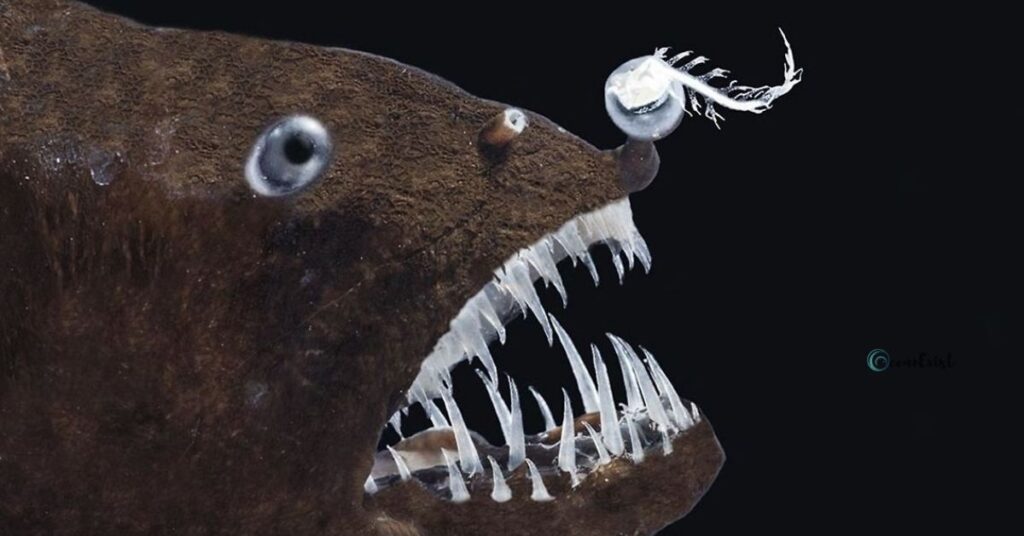
- Scientific name = Linophryne arborifera
- Maximum weight = n/a
- Maximum length = 77mm
- Edible
Illuminated NetDevil has a luminous lure in the head and a multi-branched barbel hanging from the lower jaw. The whole body is covered with gelatin.
Male illuminated net devils integrate them with females through blood vessels and tissues. Food can be passed to males through this connection.
Frilled Shark
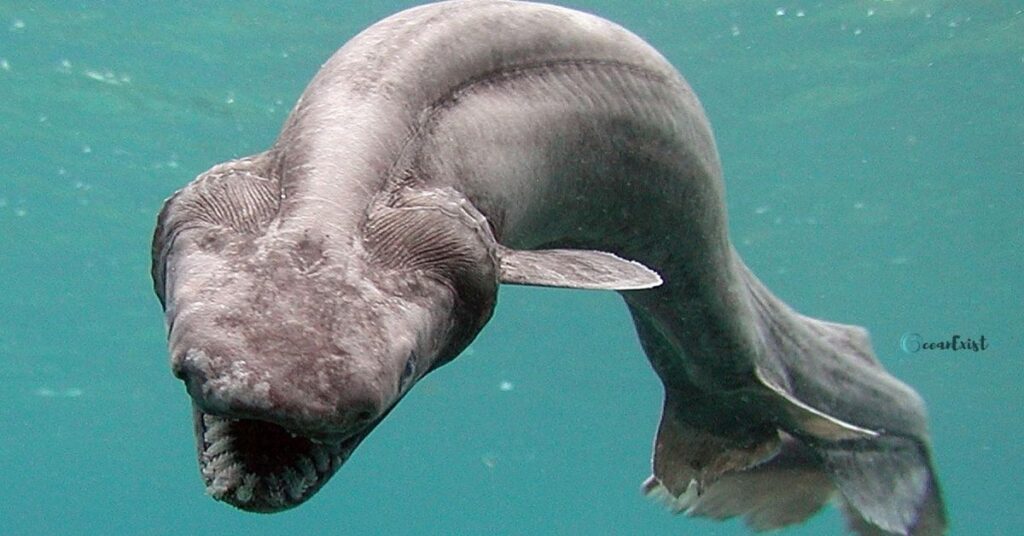
- Scientific name = Chlamydoselachus anguineus
- Other Name = Lizard shark
- Maximum weight = 136 kg
- Maximum length = 77mm
- Edible
A long, slender body and elongated tail give the frilled shark an eel-like shape. It has a chocolate-colored body. Frilled sharks have similar teeth on both upper and lower jaws.
Frilled sharks have internal fertilization and are ovoviviparous.
Ancistrus

- Scientific Name = Ancistrus dolichopterus
- Other Name = bushy nose or bristle nose catfish
- Maximum weight = 9.4 grams
- Maximum length = 95.8mm
- Edible
Bristlenose catfish have fleshy tentacles around the sprout. These are characterized by wider and flattened heads.
They are herbivorous and solitary in nature. Ancistrus are cave spawners and lay up to 120 amber eggs.
Angler Fish
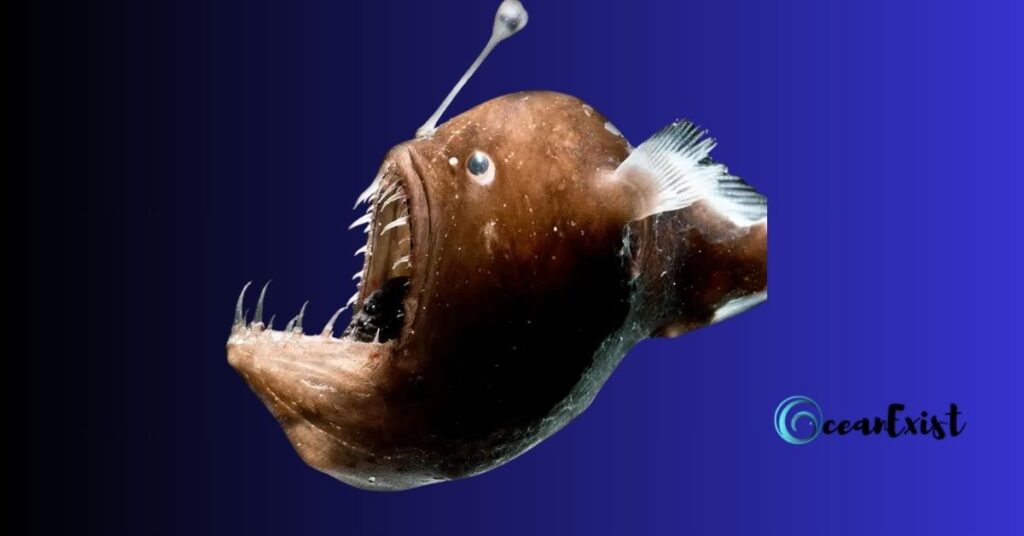
- Scientific name = Melanocetus johnsonii
- Other Name = frogfish
- Maximum weight = 49 kg
- Maximum length = 1.2 metres
- Edible
Angler fish can be called the ugliest animal on the earth. And lives in the most lonely and inhospitable place at the bottom of the sea.
It also has bioluminescence through the fin ray in the front. These fish are also famous for their dimorphism and symbiosis.
Blobfish

- Scientific name = Psychrolutes marcidus
- Other Name = Smooth head blobfish
- Maximum weight = 9kg
- Maximum length = 30 cm
- Edible
This strange smooth-head blobfish is considered the ugliest fish in the world. As blobfish don’t have a skeleton, the swim bladder is not present. The gelatinous and strange-looking fish lives at higher pressure than normal.
Loose, flabby skin, black eyes, largemouth, and bulbous nose make it one of the scariest creatures on the earth.
These slow-reproducing organisms lay up to 100,000 eggs. However, their lifespan is very long, which is about 120 years.
Mostly, they live in the deep, high-pressure areas at the bottom of the Indian, Pacific, and Atlantic oceans. Blobfish survive on crustaceans.
Here you have it:
25 ugliest fish with their useful information.
What is the ugliest fish among them?
Or
Am I missing any fish that are uglier than these?
Let me know in the comment section.
Subscribe for the latest interesting content.
